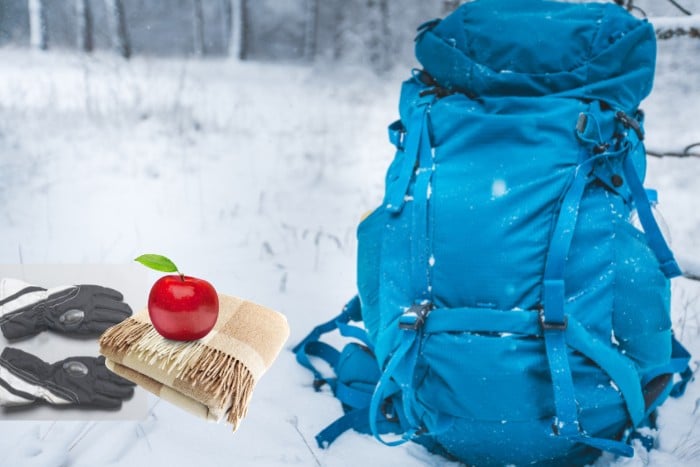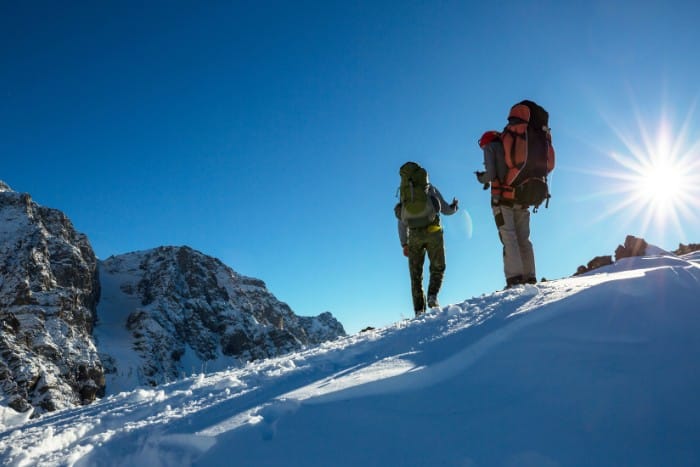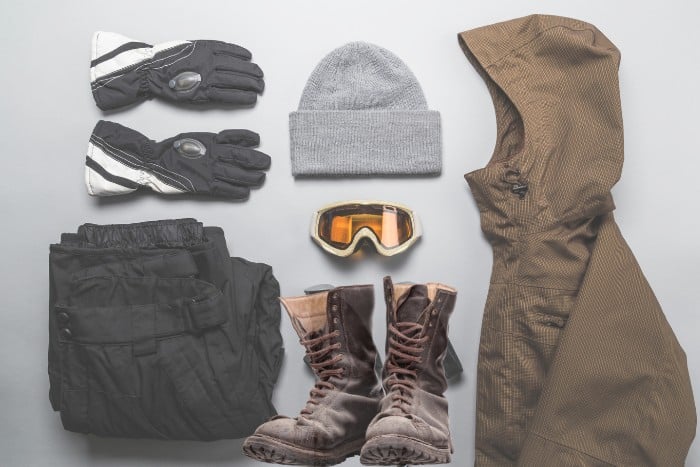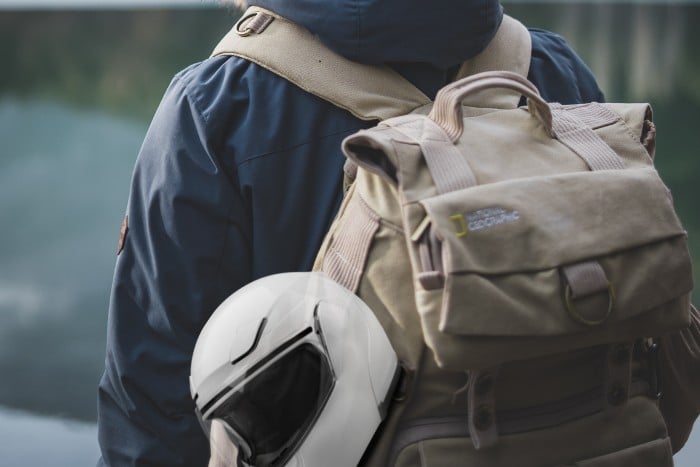You will often see snowboarders riding around wearing backpacks. Surely your jacket and pants pockets are big enough to carry all the stuff you need for a day on the mountain; so, what could they possibly be carrying in those backpacks, and are you missing a trick?
Snowboarders wear backpacks for several reasons. They could be carrying extra clothing layers, camera equipment, and avalanche safety apparatus. Backpacks are also good for saving money as you can fill them with supplies, so you don’t have to eat and drink in expensive mountain restaurants every day.
In this article, I’ll talk about all the different things people may need to carry in their backpacks. You’ll learn the advantages of wearing a backpack while learning about some safety aspects, so you can decide if you need one at all.
What Do Snowboarders Put In Their Backpacks?
Different people have different needs during the day on the mountain, so it can be helpful to have some extra carrying capacity while you’re shredding.
Let’s take a look at the different things that riders stuff into their backpacks.
1. Backpacks Are Great For Carrying Supplies
For me, part of going on the mountain is to have a nice little break in a bar or restaurant and eat great food at lunchtime.
However, if you do this every day, it can get pretty expensive and make your snowboard pants tighter around your waist.
If you wear a backpack on the mountain, you can stuff it with sandwiches or anything else you fancy eating that day. You can even carry a few beers if you don’t mind the extra weight.
Taking your own food to picnic areas around the mountain, or even just in a sunny spot by the side of the slopes, is an inexpensive way of feeding yourself and your group.
The good thing about eating stuff you’ve been carrying around all morning is that you’ll notice that your backpack is much lighter in the afternoon, making your snowboarding much more pleasant, especially with a full stomach.

2. You Can Stay Hydrated
Riding hard all day can be thirsty work, and staying hydrated at high altitudes is always good.
Some backpacks are simply hydration packs with a bladder full of water connected to a tube that allows you to take a sip when needed.
Other backpacks are compatible with hydration systems which adds to their practicality. You can also choose what drink you put in your hydration pack.
Some people like to put electrolytes and energy drinks in their backpacks to keep them going throughout the day.
However, I know people who have filled their hydration packs with beer and hard liquor. As tempting as this may sound.
I wouldn’t recommend this as it starts off funny, but then it gets dangerous very quickly, especially when your mad friends are drunk by 10:30 in the morning
3. Backpacks Make Walking Around With Your Snowboard Equipment Easier
Good backpacks specifically for skiing and snowboarding have external straps designed to hold your equipment.
This means you can hike into the backcountry with snowshoes and poles without carrying your snowboard under your arm.
This makes your hike much more efficient and safer, and it also means you can’t drop your snowboard while traversing a precarious ridge on the hunt for powder.
On a less extreme note, attaching your snowboard to your backpack is very advantageous for families with young kids.
There’s always a dad who is loaded up like a packhorse with his whole family’s ski and snowboard equipment while the mom is trying to organize the kids 20 paces behind him.
4. You Don’t Have To Load Up Your Pockets
Snowboard jackets and pants come with lots of pockets. These are great for carrying all the different things you need for a day, such as a beanie hat, snowboard lock camera, phone, wallet, etc.
However, it can be pretty annoying when your pockets are jammed, packed full of things restricting your movement.
For example, if you have a big thick wooly hat in your jacket pocket, it can restrict your movement when you bend over to do your bindings up.
Also, if you put things in the cargo pockets of your snowboard pants, they can bang against your legs or knees, which is really annoying.
A lot of these things in your pockets can also pose a danger when you fall.
For example, if you have your keys in your pocket and fall on them, it can be really dangerous as they can poke through your clothing and into you.
5. Backpacks Are Great For Carrying Extra Layers
One of the best ways to stay comfortable on the mountain is to wear several clothing layers. This allows you to fine-tune your body temperature by adding and taking off thin layers of clothing.
But if you don’t have a backpack, you can’t do this because you’ve got nowhere to put clothing that you add and remove.
If you ride with a backpack, you can carry lightweight puffer jackets, an extra thin mid-layer, or even a hoodie if you fancy it.

6. You Can Carry Camera Equipment
The nature of backcountry riding means your body temperature fluctuates a lot, especially if you are splitboarding.
Therefore you need to be able to add and remove layers so you don’t overheat or get too cold.
When I splitboarding, I usually wear a thin pair of touring gloves for the hike up the mountain.
But then, once I’ve rebuilt my snowboard, I like to ride down wearing proper snowboard gloves or mittens that I have stuffed inside my backpack.
Do check out my recommendations for the best snowboarding gloves for women for some worthy suggestions. Don’t worry, the list contains unisex recommendations.
I also put a lightweight puffer jacket in my backpack because it doesn’t take up much space, but it keeps me warm if the weather changes.
Wearing A Backpack In The Backcountry
You may see some snowboarders with large backpacks, looking like they mean business.
There’s a good chance these guys and girls are not just riding around the groomers but heading off into the backcountry. So what are they carrying?
1. You Need To Carry The Appropriate Clothing
The nature of backcountry riding means your body temperature fluctuates a lot, especially if you are splitboarding.
Therefore you need to be able to add and remove layers, so you don’t overheat or get too cold. When I splitboarding, I usually wear a thin pair of touring gloves for the hike up the mountain.
But then, once I’ve rebuilt my snowboard, I like to ride down wearing proper snowboard gloves or mittens that I have stuffed inside my backpack.
I also put a lightweight puffer jacket in my backpack because it doesn’t take up much space, but it does a great job of keeping me warm if the weather changes.

2. It’s Essential To Stay Fuelled Up
You can also be out in the wilderness for a long time while exerting a lot of energy. So you need to ensure that you have enough food and water in your backpack to keep you going and for emergencies.
It’s even a good idea to take a flask of coffee or hot chocolate to warm you up when you stop for lunch.
3. You Have To Carry Avalanche Safety Equipment
If you see anybody heading into the backcountry without a backpack, they are horrendously underprepared and putting themselves and their friends at risk.
This is because they clearly don’t have the necessary avalanche safety equipment. Avalanche safety equipment consists of a transceiver, shovel, and probe.
The transceiver is an electronic device that you strap to your body, allowing people to find you if you have been buried in an avalanche. It also allows you to find your friends if they get buried.
Once you have a good idea of where the victim is buried, you use the probe to pinpoint their location under the snow.
When you know where they are, you use your shovel to dig them out of the snow as fast as possible.
4. Some Backpacks Are Fitted With Airbags
The backpack I use for riding off-piste and in the backcountry is fitted with an airbag.
If caught in an avalanche, I would pull a ripcord on the backpack’s strap, which sets off an explosive charge that triggers a gas canister that inflates an airbag outside the backpack.
The airbag creates buoyancy, which should keep me closer to the surface of an avalanche, increasing my survival rate.
This is something I never want to use, but it’s good to have something that will increase the level of safety, even though it adds a lot of weight to a backpack.
5. Stash Your Cramp-ons And Poles
When hiking or split boarding in the backcountry, you can make life much easier by using poles. They help you to navigate tricky terrain and take some strain off your legs.
Once it’s time to ride back down, you can stash your poles inside or on the outside of your backpack.
Sometimes you may have to walk on slippery ice, which can make your progress up the mountain incredibly hard or impossible.
However, you can overcome the difficulties of ice if you fit crampons to your boots or to your splitboard while in touring mode.
These are metal contraptions with aggressive spikes on the bottom that grip the ice allowing you to walk on it.
Unfortunately, these add extra weight to your backpack, but they can make the difference between you completing your tour and having to head home early.
6. Backpacks Have Helmets Carriers
Hiking or splitboarding up a mountain in the backcountry makes you incredibly hot, so the less clothing you have, the better.
I often end up ascending in just a thermal top and all my vents open on my snowboard pants.
As you get so hot hiking up the mountain, you want to avoid wearing your snowboard helmet. Your head gets very sweaty, and it is very unpleasant.
Therefore you can attach your helmet to the outside of your backpack using its helmet carrier system. Helmet carriers are secure, so you won’t lose your helmet while hiking up the mountain.

What’s It Like Snowboarding With A Backpack?
Most of the time, snowboarding with a backpack is not a problem. It will only take a few runs to get used to it if you’ve never ridden while wearing a backpack before.
You should be fine if you wear a backpack suitable for snowboarding, not just a cheap school bag.
This is because proper ski and snowboard backpacks are adjustable and comfortable while perfectly suited to winter sports.
If your backpack is very heavy, it will take a bit longer to get used to, and you may have to adjust how you ride slightly. You will also notice that your range of motion is compromised.
My backcountry backpack is pretty heavy due to everything I carry and the airbag system.
This can put some pressure on my back, especially when twisting, and it can also make it difficult to get on my feet, especially in deep snow.
However, after a few days with it, I get used to the weight and even forget about it. But I relish the days I don’t have to ride with the weight of a backpack.
Other Things To Consider
One thing you need to be aware of when riding with a backpack is when you have to get onto a chair lift.
Sometimes the lift attendant will make you remove your backpack, so it doesn’t get hooked up on the chair, preventing you from getting off at the top.
Therefore, you often need to remove your backpack and just put it on your lap while you ride the chairlift.
Alternatively, you may be able to just make sure the straps are tucked away securely so they don’t get snagged on any part of the chairlift.
When you ride a chairlift with a backpack on, you’ll notice that it pushes you forwards to the edge of the chair. The bulkier your backpack, the more awkward it is to sit on the lift.
Therefore, choosing a low-profile backpack is best if you intend to continue to wear it while on the lift.
If you’re still learning the basics of snowboarding, don’t bother wearing a backpack because it can make getting on and off the chairlift a little tricky.
It would be best to focus on your technique and not worry about what you have in your backpack and the extra weight it gives you.
Another advantage of wearing your backpack is that it adds an element of protection for your back.
Some backpacks are even back protectors integrated into them, which gives you peace of mind, especially if you have a pre-existing injury.
Final thoughts
Backpacks are definitely useful and offer a high level of practicality as you can pack water, snacks, and additional clothing to enhance your day on the hill.
In some circumstances, they are essential safety equipment to protect you from avalanches or save others in similar circumstances.
However, while backpacks can come in handy a lot of the time, sometimes it’s great to ride without one as you have nothing to restrict your movement or get in the way while trying to have the best time on the mountain possible.
